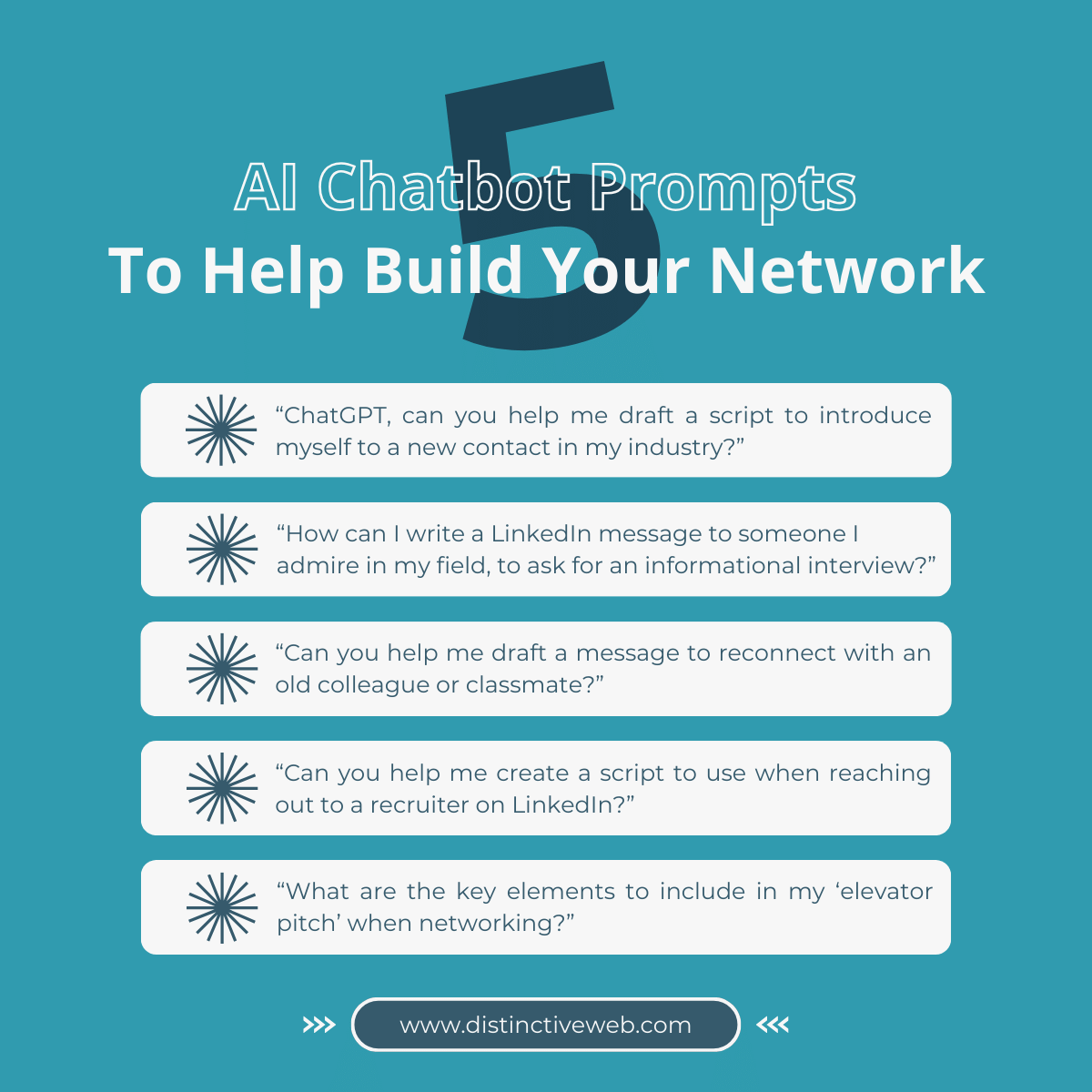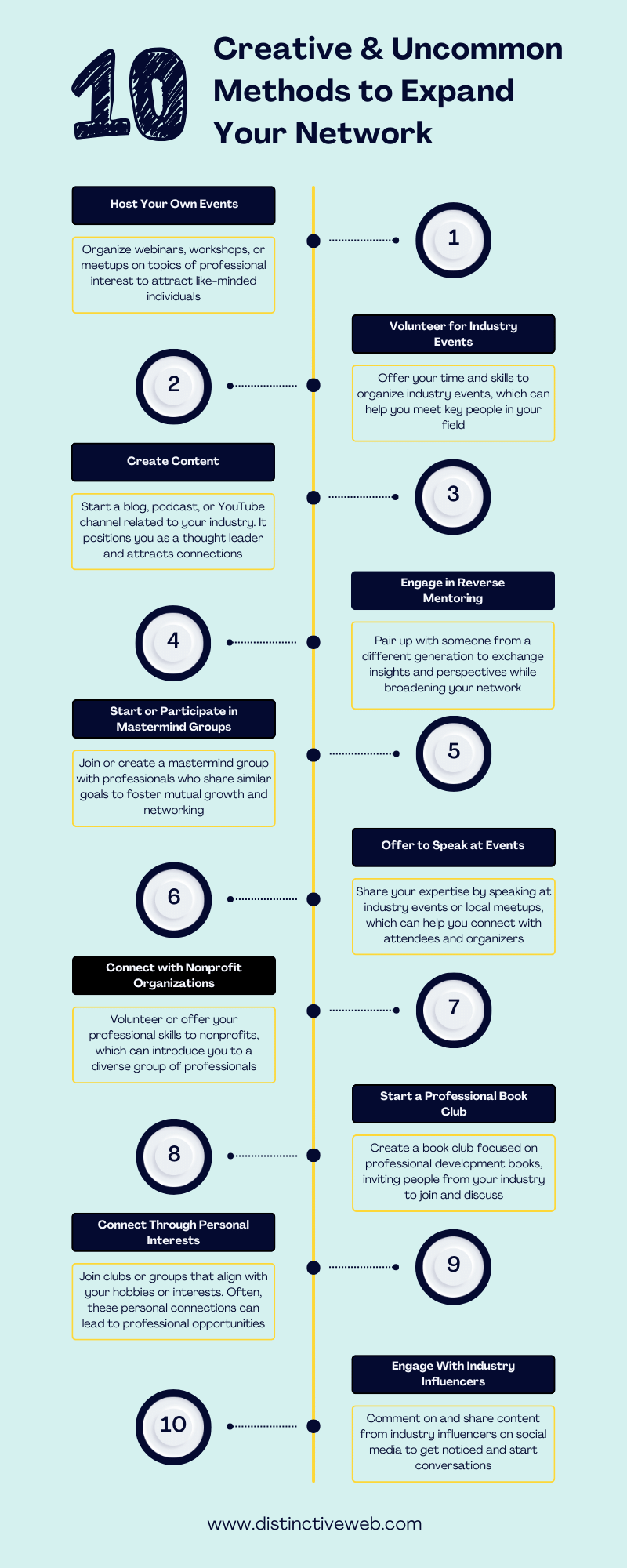
You’ve almost surely heard the age-old adage, “It’s not what you know, but who you know.” And there is a reason this saying endures: it captures the essential truth that job search and career success often hinges not just on your skills and knowledge but also on the breadth and depth of your professional relationships.
Our world is becoming increasingly digital and interconnected, which means that having a robust professional network is more crucial than ever. Your professional network provides access to job opportunities in addition to a supportive community for mentorship, knowledge exchange, and career advancement.
Expanding your network involves much more than collecting business cards or adding connections on LinkedIn. It requires building meaningful relationships that can serve as bridges to new career opportunities and paths for growth.
In this post, we’ll walk you through some essential strategies to broaden your professional network effectively. Whether you’re just starting your professional journey or looking to strengthen the bonds you already have, you’ll find tips here that can make a real difference.
Together, we’ll dive into the basics of networking, discover powerful ways to connect with industry leaders and peers, and uncover how to make the most of modern tools to keep your network vibrant and expanding. By the end, you’ll have practical advice and networking tips that can transform mere contacts into genuine relationships and strong pillars of your career success.
Understanding the Value of a Diverse Professional Network
A diverse professional network is more than just a collection of contacts—it’s a dynamic ecosystem that can propel your career to new heights. The benefits of cultivating a broad network are manifold, each contributing in unique ways to your professional and personal development:
In the following sections, we will explore practical steps to build and maintain such a valuable network. From identifying and reaching out to potential contacts to engaging in meaningful ways that foster strong, lasting relationships, you’ll learn how to turn every handshake or connection request into a powerful link in your career chain.
Laying the Foundation for Networking
To get the greatest return on your networking efforts, you should have a solid foundation in place beyond building new relationships. Understanding your goals, knowing your professional value, and maintaining a strong digital presence are key elements in this foundation that will pave the way for meaningful connections and a strong professional network.

Building a robust networking foundation involves thoughtful planning and active engagement. By setting clear goals, knowing your value, and maintaining a strong digital presence, you create a conducive environment for networking success.
With this foundation in place, you’re well-prepared to really start networking and expanding your network in a meaningful way. In the next sections, we’ll explore how to build upon this foundation by connecting with others and making the most of every interaction.
Building Your Network Brick by Brick
Now that you’ve set a solid foundation, it’s time to start growing your network strategically. Building your professional circle involves identifying key players, turning existing acquaintances into allies, and engaging within the right spaces and groups.
Building a strong professional network doesn’t happen overnight. It requires consistent effort and genuine interactions throughout your professional journey. By identifying key players, deepening connections with acquaintances, joining groups, and actively participating in relevant professional spaces, you can expand your network effectively and create opportunities for mutual growth and advancement.
Expanding Beyond Your Comfort Zone
To harness the real power of networking, it is vital to reach beyond familiar territories and connect with new people outside your immediate industry or area of expertise. Diversifying your network can expose you to new perspectives, opportunities, and ways of thinking that can significantly enhance your personal growth and professional development.

Expanding your network beyond your comfort zone requires curiosity and a bit of courage, but the benefits are immense. By venturing into new territories, you can discover unexpected opportunities, gain unique insights, and build a more resilient and resourceful professional network.
The Art of Making and Maintaining Connections
Growing your network is only the beginning. The real art lies in nurturing these relationships over time to ensure they are both enduring and mutually beneficial. Here’s how you can effectively make new connections and keep them strong.

By mastering the art of making and strengthening connections, you transform your growing network into a robust, active, and supportive web of professionals. These strong relationships will not only enrich your career but can also enhance your personal growth and open up new career paths you might never have anticipated.
Networking Best Practices and Common Pitfalls
To ensure that your networking efforts are fruitful and professional, it’s crucial to understand the best practices to follow and common pitfalls to avoid. This section will guide you through essential dos and don’ts, helping you navigate your networking journey with confidence and effectiveness.
Best Practices in Networking
Common Pitfalls to Avoid
By adhering to these best practices and steering clear of common pitfalls, you’ll be able to build a broad and deep professional network filled with meaningful relationships that can support and advance your career.
Wrapping It Up: Building Bridges for Career Success
As we’ve explored throughout this post, expanding your professional network is about more than just collecting contacts—it’s about building bridges. These bridges can lead to new opportunities, provide support and mentorship, and open avenues for personal and professional growth you might never have imagined.
Remember, effective networking is an ongoing process involving planning, genuine interactions, and consistently nurturing existing relationships. Start with a clear understanding of your goals and a solid presentation of your own value. From there, engage thoughtfully with others, both within and outside your current industry or sector. Be proactive about attending networking events and participating in various professional communities, always aiming to provide at least as much value as you receive.
As you continue to build relationships and expand your network, remember the importance of maintaining these connections. Regular communication, mutual support, and genuine interest in your contacts’ successes transform simple contacts into strong, long-lasting professional relationships. Utilize the tools and technologies available to manage and enhance these connections, ensuring you can stay engaged no matter how extensive your network grows.
Your professional network can significantly influence your career trajectory, opening doors and providing invaluable resources for career advancement. By applying the strategies outlined in this post, you’re well on your way to creating a vibrant, supportive, and dynamic network. So start building those bridges today—your future self will thank you for the career successes that follow.








